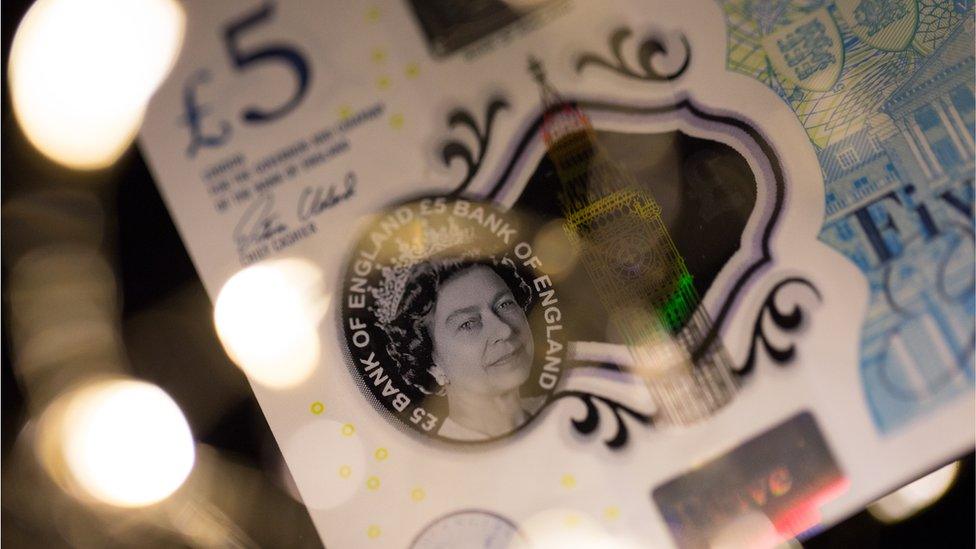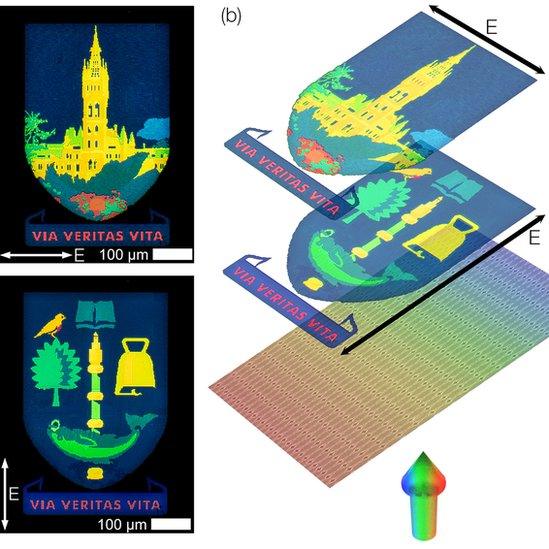Nano discovery could halt counterfeiters
- Published

Engineers say the process could be used to produce anti-counterfeit banknotes
Scientists have discovered a new form of nanotechnology that could be used to produce anti-counterfeit banknotes.
The breakthrough could also have implications for data storage and digital imaging, scientists have said.
Engineers from Glasgow University developed filters that display different colours depending on the orientation of light hitting them.
The technique allows the "printing" of two different, but detailed, images within the same surface area.
The team, from the school of engineering, has used the technique to produce a microscopic image of the university's crest or the university's tower, depending on how the light hits it.
Fade over time
Dr Alasdair Clark, lead author of the research paper, explained how the technology works.
"We've discovered that if we make colour pixels from tiny cross-shaped indents on a strip of aluminium film, the colour they display becomes polarisation-dependent, allowing us to encode two colours into a single pixel, and then select which colour is displayed by shining different polarisations of light at the surface," he said.
"By changing the size and shape of the nanoscale indent, we can create a wide range of different colours at very high resolutions."

The team produced a microscopic image of the university crest and tower
Instead of relying on dyes and pigments, as in traditional printing, structural colour uses specially-structured nanomaterials to render colours.
These allow for much higher resolution prints that do not fade over time.
While a typical printed image in a magazine might consist of about 300 coloured dots per inch of page, or 300 DPI, a page "printed" with structural colour techniques could reach a resolution of 100,000 DPI or more.
Dr Clark said there were a lot of potential applications for the colour technology that the team was excited about.
Digital photography
He added: "It's ideal for long-term data archival due to its ultra-high resolution, and because the colours won't fade even when exposed long-term to the harshest sunlight.
"We've worked out that we could store 1.46 Gb per square centimetre, so a single A4 sheet could hold more than 900 Gb of data.
"Secondly, the process to produce the plasmonic colours is difficult to replicate without access to dedicated facilities, so it could be ideal for creating a new kind of anti-counterfeiting material for banknotes.
"Lastly, it offers the possibility of developing new types of colour filters for digital photography."
The paper, titled Plasmonic color filters as dual-state nano-pixels for high density micro-image encoding, is published in Advanced Functional Materials.
The work was supported by the Royal Academy of Engineering and the Engineering and Physical Sciences Research Council.